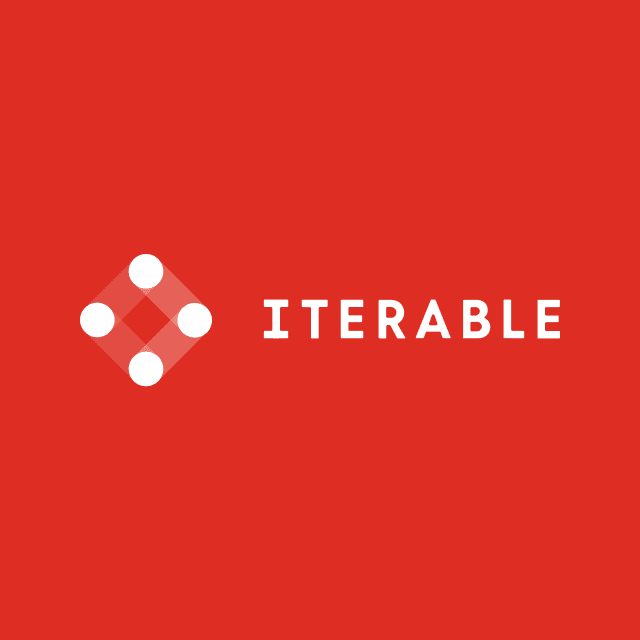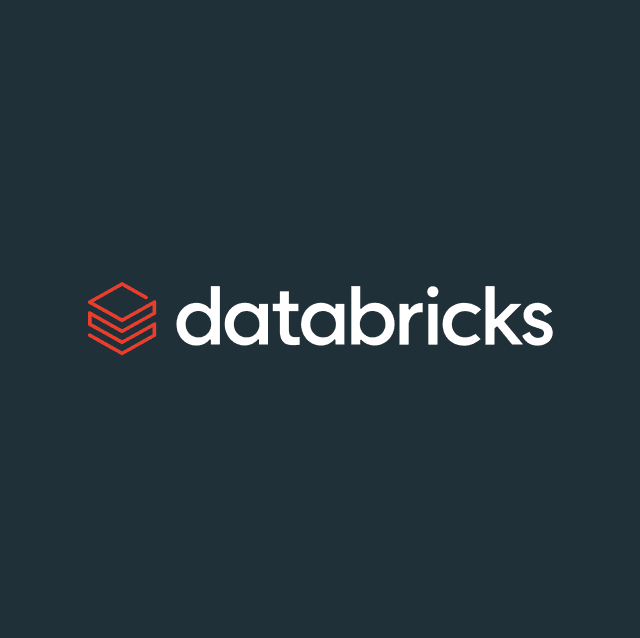Retail media networks are exploding in popularity—over 200 companies, from Walmart to Amazon, are monetizing their first-party data by selling ad placements across their websites, apps, and media channels, with many more retailers following suit. With such massive potential from this new high-margin revenue stream, the question retailers face isn’t whether to launch a network—it’s how to design one that can scale effectively and drive long-term profitability.
In this blog, we’ll outline the key pitfalls to avoid, the best infrastructure to adopt, and why building your retail media network on your data warehouse—using a composable architecture—is the smartest way to scale. Whether you're just starting or rethinking your current architecture, understanding these technical foundations will help you implement systems that allow you to stay agile, efficient, and ready for future growth.
The two paths to building a retail media network
Every media network is built differently. But across every unique network we’ve seen, there are fundamentally two ways we see retailers build out their architecture:
1. Build your retail media network around your vendors
Realistically, retailers rely on a mix of in-house tooling and third-party vendors to run onsite ads, expand to offsite channels, provide campaign performance reporting, and collect revenue. Because most media networks rely on third-party vendors for critical capabilities, it feels natural for the center of gravity to revolve around them.
For example, a retailer wanting to monetize audiences through offline media channels can build a process to regularly onboard their data into a data onboarder’s third-party marketplace, where advertisers can easily buy access to their pre-curated audiences on a per-impression basis.
This vendor-focused approach works by building infrastructure that moves retail data from different data stores across the business into end solutions for targeting audiences, serving ads, measuring results, and collecting payments.
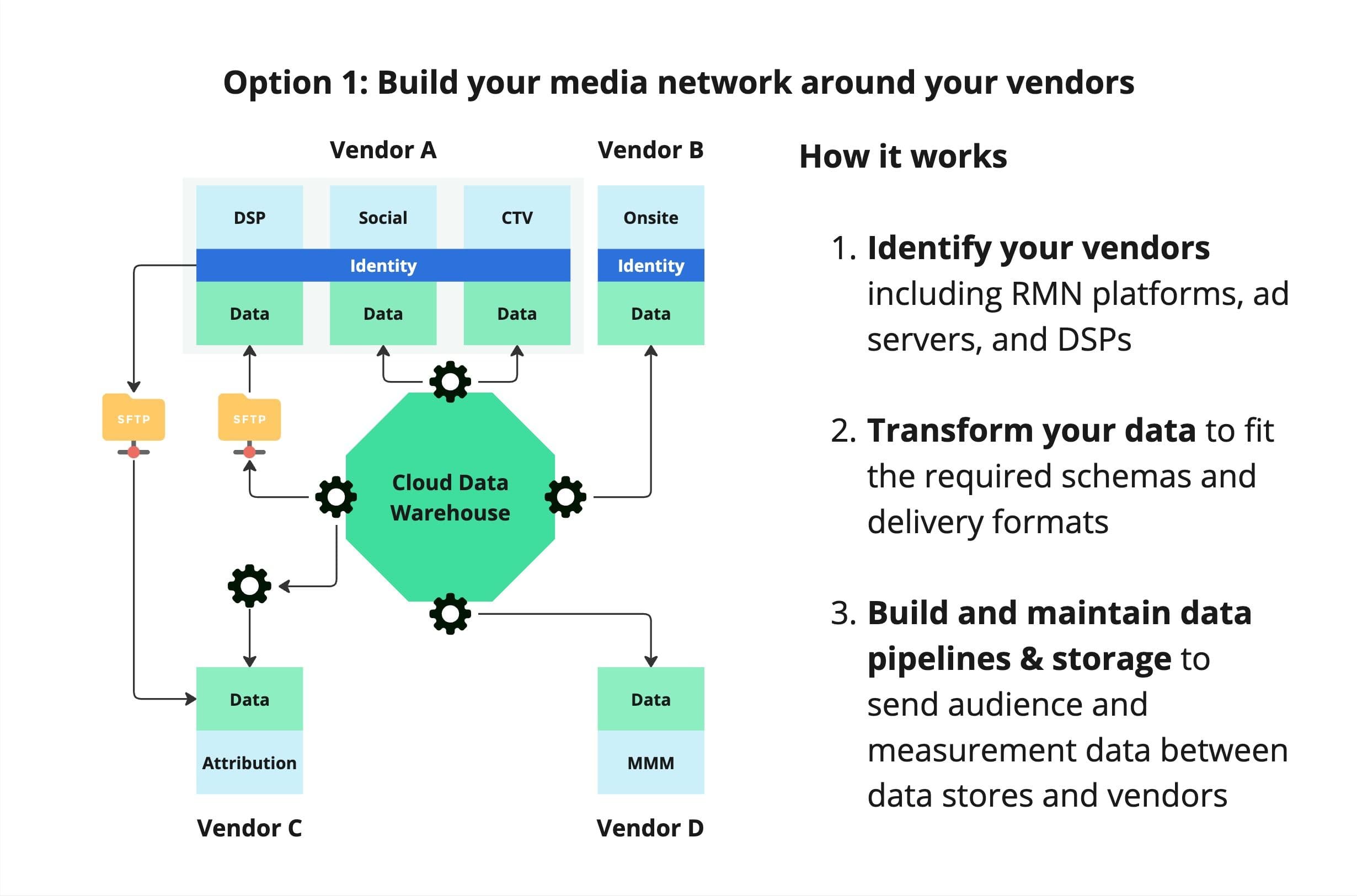
While this approach can work in the short term, most retailers find that it results in a complex web of data pipelines, high costs, and less agility in the long term.
2. Build your retail media network around your data
The alternative is to build directly on your cloud data warehouse. This is where your first-party data already lives, making it the most logical foundation for your media network.
At Hightouch, we call this a composable architecture.
With this approach, the same retailer could instead partner directly with a DSP like The Trade Desk for offline media monetization. To move the data, they can use reverse ETL to query the warehouse directly and push identity-rich audiences without duplicate storage or a string of data pipelines.
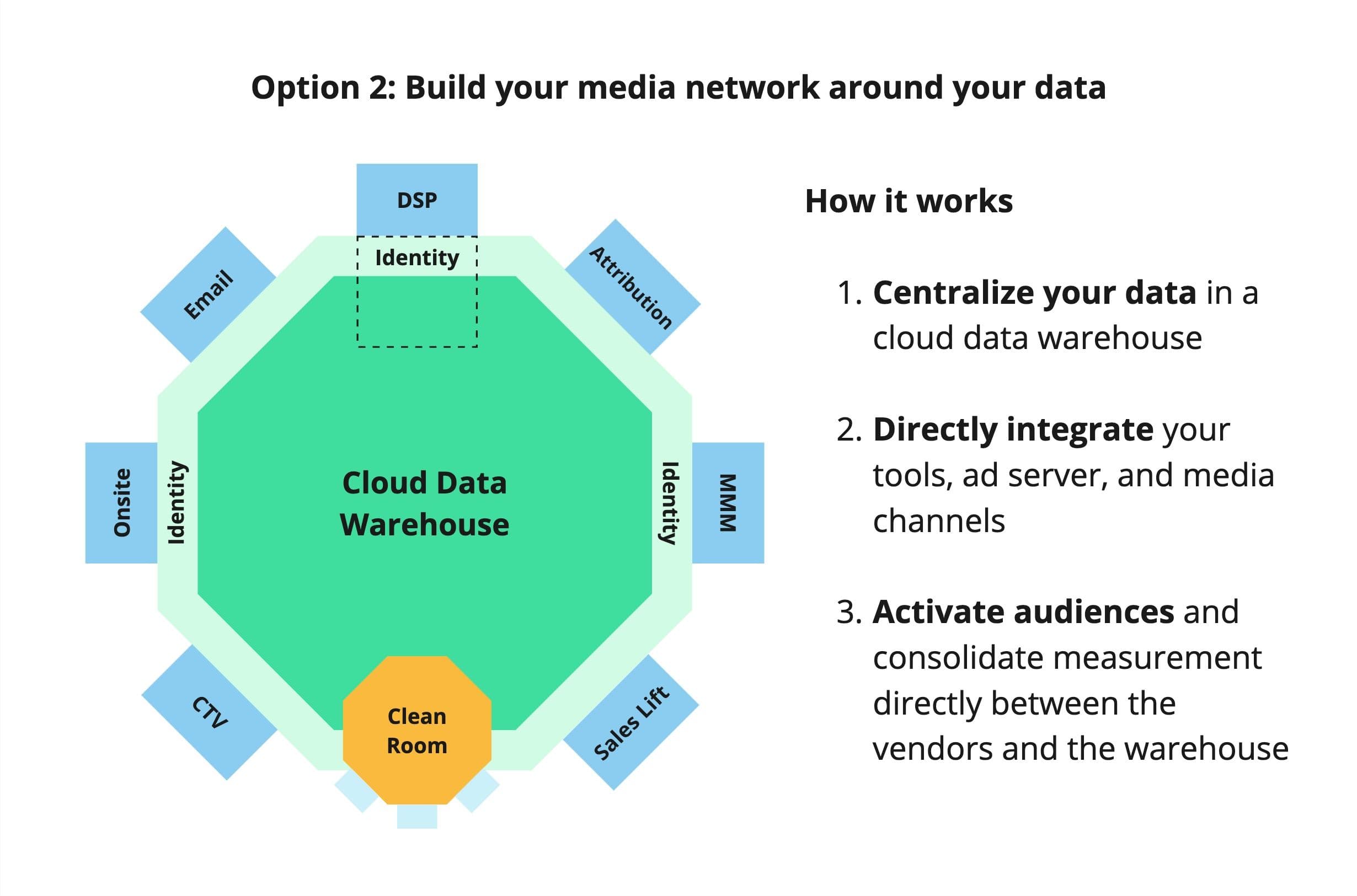
While centralizing your retail data requires an upfront investment, the benefits often outweigh the costs. Adopting a composable architecture gives you more control, minimizes complexity, and scales seamlessly.
Why the vendor-focused approach fails to scale
Relying on third-party vendors introduces several long-term challenges:
1. Excessive data duplication: Moving data across multiple external platforms increases storage costs and creates security risks.
2. Integration complexity: Managing a myriad of data sources and data pipelines across vendors and home-grown solutions requires constant troubleshooting, making the system brittle and hard to manage.
3. Limited flexibility: Each vendor’s predefined schema forces your unique business model into its rigid structure. These often differ across vendors, requiring engineering gymnastics to normalize across tools.
4. Fragmented measurement: Disconnected systems result in inaccurate and incomplete reporting, reducing the confidence in ad performance and future investment decisions.
5. High cost of ownership: Custom pipelines and maintaining disparate data stores require dedicated engineering and data teams, adding to overhead.
While many retailers have been able to get moving quickly this way, they will inevitably need to rethink their architecture to remain agile and scale.
The case for a composable retail media network
Building directly on your data warehouse avoids these pitfalls by minimizing the distance between the data and the solutions that use it:
1. Minimal data copies: Data is pushed directly into the platforms that need them without the need for persistent data storage outside of your cloud infrastructure.
2. Reduced complexity: All operations, from audience building to measurement, happen within one ecosystem, minimizing the need for data movement.
3. Improved security: With fewer data transfers between platforms, your data stays protected within your existing infrastructure.
4. Centralized governance: A single source of truth allows for consistent, accurate reporting and simplified compliance with regulations.
5. Flexibility: What makes your business unique is what makes your media network unique. A pet store, for example, will have unique information on the pets their customers own, including breeds, birthdays, and allergies. Your warehouse can accommodate these relationships, allowing for highly personalized segmentation. This lets retailers provide an offering as unique as the business.
6. Lower costs: By storing and processing everything within your data warehouse, you eliminate the need for duplicative third-party systems.
This is the approach that retail leaders like Bol.com—the largest online retailer in the Netherlands—use to generate hundreds of millions in annual media revenue.
“Your cloud data warehouse is your most powerful asset for building a retail media network. By centralizing audience building, activation, and measurement in one place, retailers can reduce complexity and unlock scalable, personalized marketing strategies that drive measurable ROI.”

Dio Favatas
Head of Identity Solutions and Marketing Clouds at Tredence Inc.
A practical guide to building on your data warehouse
If you decide to adopt a composable approach, here are the core elements that you need to ensure your retail media network is scalable and operates effectively:
1. Cloud data warehouse
First, you will need a data warehouse with a foundation of customer, product, and transaction data. From there, integrate best-in-breed composable solutions that add the necessary components for audience building, identity resolution, activation, and measurement.
2. Audience building
If you are monetizing pre-curated audiences, you can start with simple SQL definitions that query data directly from your warehouse. As your network grows, consider adding a user-friendly audience builder for your team to curate and refine segments using the flexible data schema that lets you define the objects and relationships that matter.
3. Identity matching
Identity data allows you to match and target audience members with personalized ads across onsite and offsite channels. Start by stitching together consented identifiers like emails, phones, and MAIDs. Consider enriching your warehouse with a universal identifier like UID2 for improved measurement. Finally, consider supplementing your identity data and boosting the size of your monetizable audiences with a composable third-party identity graph.
4. Onsite & offsite activation
Use reverse ETL to activate targetable audiences directly from your data warehouse to your onsite ad platform and offsite media channels. Hightouch provides over 50 direct media integrations, including ad servers, retail media platforms, DSPs, and CTV.
5. Tracking & billing
Implement simple, scalable billing solutions. Start with predefined contracts or simple CPM models. Consider integrating with a third-party marketplace through a DSP like The Trade Desk. Marketplaces allow advertisers to use your audiences without having to negotiate with a sales rep, and for you to automatically track usage, send invoices, and collect payment.
6. Closed-loop measurement
Closed-loop measurement is the most powerful reason advertisers invest in retail media. Onsite ads within a retail media network are shown in the same place where customers show intent and ultimately buy. Successful retail media networks need robust measurement capabilities that can tie the advertiser’s impressions directly to the retailer’s SKU-level sales and incremental revenue.
Closed-loop measurement is best built in your data warehouse where your impressions and sales transactions already live! With some modeling, you can develop view-through attribution, incrementality, and media mix modeling to provide comprehensive performance reports that keep advertisers invested.
For offsite media, consider ways to give advertisers visibility into impressions on each respective channel through a direct ETL of exposure logs, clean room analysis, and warehouse native analytics tooling like campaign intelligence.
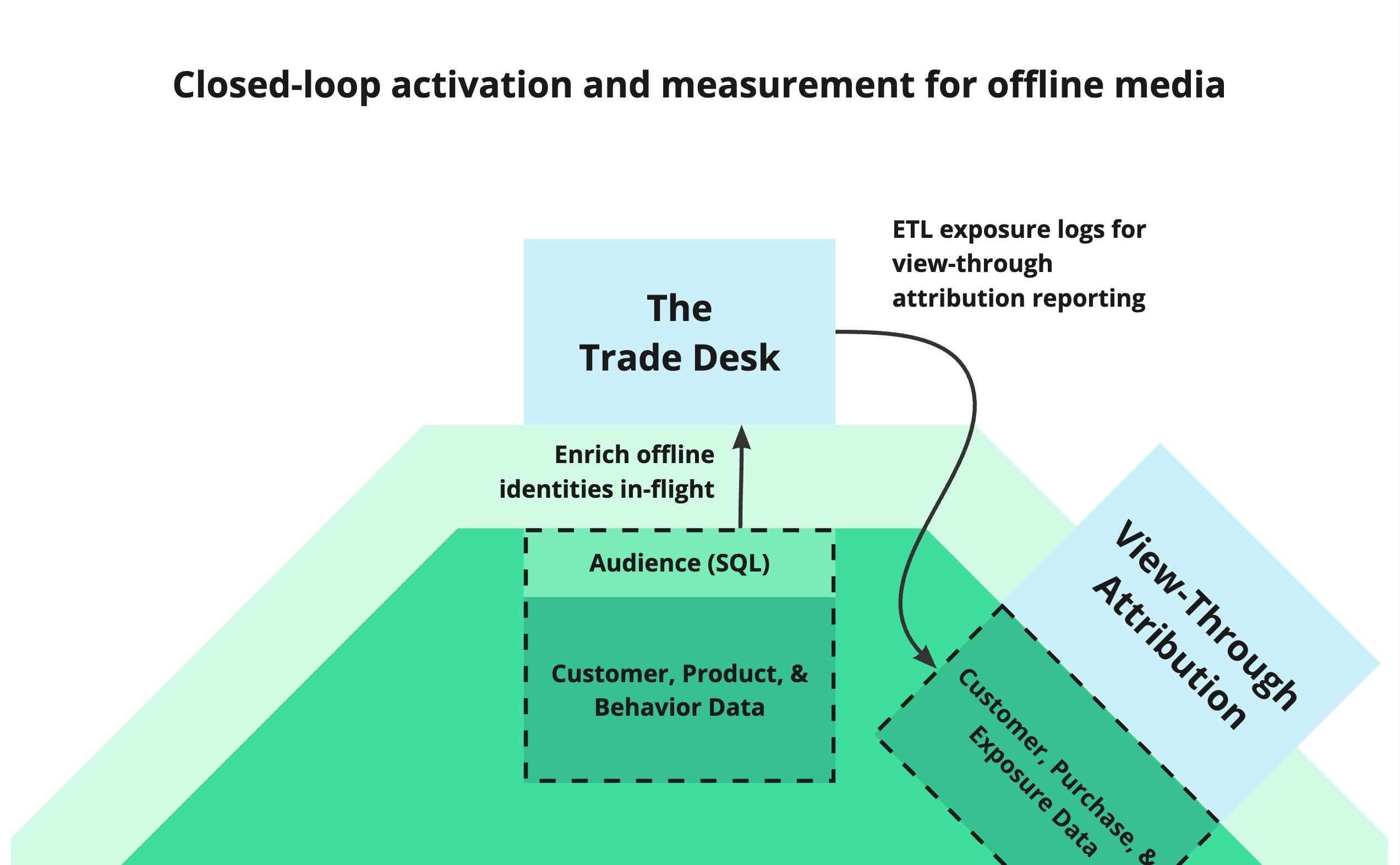
Closed-loop measurement is possible for “offsite” placement as well! In this example, a retailer uses Hightouch to sync audiences to The Trade Desk’s third-party marketplace to bring their media network to offline channels. The Trade Desk can share raw exposure logs directly back into the warehouse where the logs can be joined with customer & transaction data, modeled, and displayed in a dashboard for SKU-level attribution reporting.
Conclusion
How you build your network determines your long-term success in a rapidly evolving retail media landscape. Avoid the costly and complex approach of building around a third-party vendor and instead build directly on your data warehouse. A composable architecture allows you to reduce costs, streamline operations, and scale quickly to meet growing demand.
By building your network from the ground up with a data-first mindset, you not only stay competitive—you thrive.
Want to learn more? Join us on October 24th.
Join our webinar on Thursday, October 24th at 10:00 AM CT to learn from experts at Databricks and Tredence how retailers can build a robust data foundation for their retail media networks, allowing them to deliver superior results for partners, consumers, and retailers alike.






